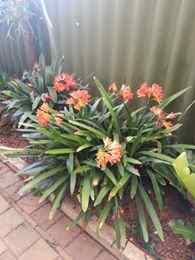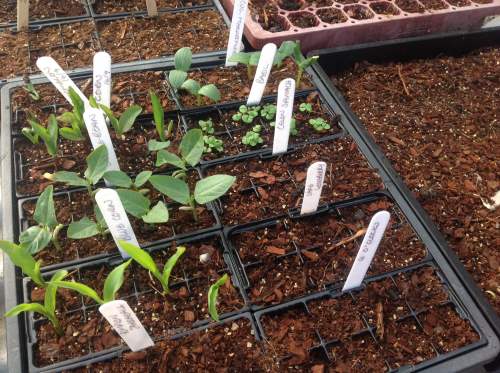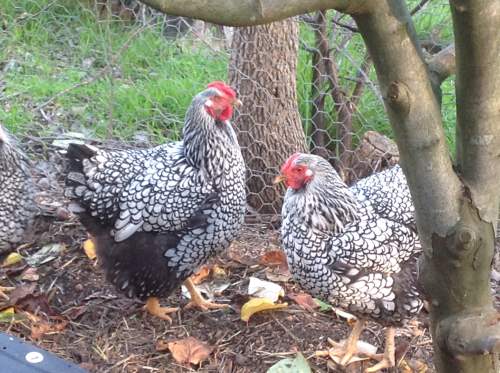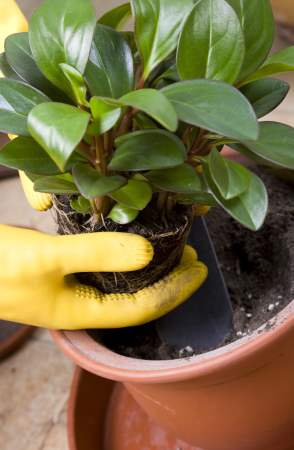| item(s), Total: $0.00 View Cart |
| Shopping cart is empty. |
Spring is here, and hasn’t it been gorgeous so far?
And... we are pleased to be running a workshop in a few weeks time, in conjunction with Leesa Caldwell from The Greenhouse. See more details below. So please send us in your garden pics; and until next time - as always - happy reading & happy gardening! Linda & the Team @ GLSCIn this newsletter:
Jobs to do in the gardenThere’s lots to do in the garden at this time of year! Here are some jobs to tackle now:
What to grow in the garden now It’s time to plant: It’s time to plant:Artichokes (purple artichoke pictured here), basil, beetroot, capsicum, chilli, carrot, celery, chives, cucumber, dill, eggplant, fennel, lettuce, melons, mint, okra, parsley, pumpkins, radish, rocket, Silverbeet, spring onions, sweetcorn, sweet potato, tomato, squash & zucchini. See our downloadable 'When to Plant Guide' for more information. Nick Bell Consultancy Nick Bell has worked as a horticulturalist for years in Perth, specialising in turf and lawn care. He developed a love of growing his own vegetables and became interested in the Square Foot Gardening method of growing lots of produce in a small space. He is currently Australia’s only Certified Square Foot instructor, and we have been working with Nick for a while now to promote this method locally. Nick Bell has worked as a horticulturalist for years in Perth, specialising in turf and lawn care. He developed a love of growing his own vegetables and became interested in the Square Foot Gardening method of growing lots of produce in a small space. He is currently Australia’s only Certified Square Foot instructor, and we have been working with Nick for a while now to promote this method locally.Nick is available to do home consults in these areas of his expertise. If your lawn is looking tired, or you need advice on establishing a new one; Nick is the man to help you! Want to grow vegies in a small area? Then check out our Square Foot Garden Guide (click here); and give Nick a call if it sounds like something you would like to try. Nick can be contacted on 0413 940 259 or by email at nickbell@iinet.net.au His consultancy rate is $50 per hour (including travel time) - please contact him direct to discuss your situation and see if and how he can help you. Nick is highly regarded throughout the industry and we are pleased to be able to recommend his services to you. Remember too - Green Life Soil Co can spread mulch and lawn top dress for you if necessary. Contact us for a quote. Chickens in the back yardRecently, we asked our Facebook friends what topics they might like to see covered in our newsletter - and several people said they were interested in keeping chickens in their back yard but weren’t sure what is involved. I’ll try to cover some of the basics here.Permission
How much room?“How much space do chickens need?” Is a common question. Commercially, hens are housed in spaces allowing up to 12 hens per square metre – so obviously, they don’t need much space. The RSPCA recommends 7 - 9 hens per m2 for enclosed birds (eg. “barn laid” eggs).However, ideally chickens should be give MUCH more room to scratch, dust bathe and express their natural instincts. You can house chickens in a small coop at night – in fact, they will usually huddle together in a small space to sleep. They can be housed in a small run (2-3 hens in a 2 x 1 metre space) during the day; but ideally they should have access to an even larger run (allowing 3 - 5 square metres per hen). This could mean letting them out supervised in the late afternoon for a while, or creating a larger run adjacent to their smaller coop they can access as often as possible. The final decision comes down to practicalities and personal ethics. Current industry standards in Australia for ‘free range’ chickens are a minimum of 0.5 square metres per hen; compared with Europe where their minimum is 4 square meters per chicken. (The European model is also the RSPCA standard for ‘free range’ accreditation). Housing for ChickensChickens need somewhere dry and sheltered (away from draughts in winter) to roost. They like to be up off the ground and will go as high as they can. This is also a ‘pecking order’ concept, with the ‘Alpha’ chicken roosting higher than the others (if she can).Where they sleep needs to be secure to keep dogs and foxes out. Don’t underestimate foxes – they can dig and climb and unfortunately are around in the metro area more commonly than thought. Particularly along river/creek/bush reserve corridors. Clean their roosting area regularly to avoid excessive flies. A layer of straw, clean sawdust, shredded paper or mulch makes this job easier, and you can add it to your compost. Feed requirements There is a huge range of commercial chicken feeds available. We sell a Biodynamic Poultry Crumble (if you are keen on giving hens an organic diet). [This is one of our featured Members Only specials at the moment.] There are laying pellets, and a huge range of mixed grain feeds around. You will probably find your hens develop a favourite feed, or will pick their favourite seeds from a blended mix, totally ignoring the parts they don’t like. There is a huge range of commercial chicken feeds available. We sell a Biodynamic Poultry Crumble (if you are keen on giving hens an organic diet). [This is one of our featured Members Only specials at the moment.] There are laying pellets, and a huge range of mixed grain feeds around. You will probably find your hens develop a favourite feed, or will pick their favourite seeds from a blended mix, totally ignoring the parts they don’t like. Birds fed solely on grain or pellets should be allowed about 200gms per bird/per day. If you are supplementing their feed with a reasonable amount of scraps, or allowing them to free range, this can be reduced to about 100gms per bird/per day. Observe what they eat - if they leave too much, it will only attract rodents, so cut back on their feed. Ideally chickens should be given greens in their diet. We have a fact sheet available (click here) on growing vegies and herbs for your chickens. There are many easy to grow plants that provide valuable vitamins and minerals to your flock, as well as helping with pest control. Depending on the breed of chicken you have, the food intake may vary. Commercial egg laying breeds (like Isa Browns) that lay daily have a much higher requirement than birds that might only lay every 2 - 3 days. Laying hens need protein, so look for a mix that contains a good amount, or supplement their diet with a protein source. Chickens love meat scraps, left over pet food, etc. Cat biscuits can be a way to supplement protein in their diet; soaking them makes them easy to eat. Chickens, like many birds, can eat other birds – including chicken. Depending how you feel about this, it is fine to give your birds scraps of chicken meat. Insects are good source of protein; another good reason to let them free range. If chickens are ‘off the lay’ increase their protein and it should help, although be aware this is a natural phenomenon affected by day length, temperature and moulting cycles and (depending on the breed you have) may last weeks or months; and there may be little you can do about it. Hens often reduce their egg production in very cold weather and very hot weather. Commercial egg producers use artificial lighting and temperature control to help stimulate laying year-round, but this is not natural. Laying hens also need a good source of calcium to ensure their eggshells are hard. Some feeds contain crushed shell grit, or this can be bought on its own from stockfeed suppliers. It is often a good idea to have this available all the time to hens, although birds that free range regularly (eating dirt and insects) may require less. Chickens & Your Garden Chickens are fantastic to help control pests, clear weeds, and dig up compacted soil. But be aware they will make a mess, dig up and eat plants you don’t want them to. Chickens are fantastic to help control pests, clear weeds, and dig up compacted soil. But be aware they will make a mess, dig up and eat plants you don’t want them to.It is best to construct some kind of temporary fencing (chicken wire and stakes, or safety orange plastic fencing) to keep them out of areas you DON’T want them in. I would tend to allow them to free range when you’re around; so you can keep half an eye on what they’re up to. Otherwise consider a ‘chicken tractor’- a type of moveable coop (many plans are available on the internet) that allows you to give them access to different areas under controlled circumstances! Chickens will naturally return to their roost at sundown, or if you need to round them up earlier - food is the way to do it. If you use a container for food scraps they will get to recognise it and once they see you heading to their enclosure with it in hand they will beat you there. SummertimeClean drinking water is a necessity. Chooks can drink a lot in summer and can suffer heat stress easily, so make sure cool water is always available (they won’t drink warm water). Use deeper containers if possible, and keep them in the shade. If the water temperature heats up, one trick is to use a 2L recycled bottle filled with water and freeze it overnight. Add it to the chicken’s water container in the morning to help keep the temperature down in the hottest part of the day.Chickens should be provided with shade - they will seek it in the heat of the day and tend to lay quietly. While chickens don’t swim, they will stand in shallow pans of water to cool their feet. If they appear stressed, wetting the ground where they lay or putting on a gentle sprinkler to cool the area will help avoid overheating. Selecting ChickensThere are many places you can buy chickens. Look online! Most breeds begin to lay from around 20 weeks - these young hens are called ‘pullets’. You can buy younger chicks, but these are often not sexed; so be aware you may end up with an unwanted rooster. Some sellers have a return policy for roosters; but check first.What breed to select is a very personal choice. If you have limited space and are wanting to keep chooks primarily for eggs, then the commercial breeds (like Isa Browns) are for you. They have been selectively bred to lay daily; but will have a shorter laying life span accordingly. Most commercial operations will replace their hens between 1 - 2 years of age; and these older birds can be picked up very cheaply, and will lay well for probably another year or two. Some of the more traditional breeds will be older when they begin to lay, and possibly give you an egg only every 2 days or so; and will go off the lay for longer periods (usually in the heights of winter & summer) - but will continue to lay for 6 - 10 years. Often highly decorative, you may need to shop around for specific breeds, and some are only seasonally available, but it is worth it if you wish to help preserve the heritage of some of the delightful old breeds. Check birds carefully and make sure they are healthy looking (check around their feet, vent and head) before buying them. We’ll take a look at common ailments and treatments in another article. So if you have room for a few chickens I’d definitely recommend getting some. They are fairly easy to look after and provide lots of entertainment. They make good pets for children, and looking after chooks is a good chore they can do to help the household. If you have a dog, ensure the chooks are safe, and observe how the dog reacts. Cats and chooks don’t bother each other and usually your dog will leave them alone too, once they have become accustomed to their presence. More Information:
My friend Hannah supplies chickens and more. She runs a unique 'try before you buy' system. Here's her website: http://chooksinthecity.webs.com/ To source unusual or heritage breeds, find great poultry forums and for information about anything poultry related: http://www.chooknet.com.au/home New Website Members Section Some of you may have found our ‘Members Only Section’ on our website… It has been there for several weeks now; but it’s time to let EVERYONE know about it! Some of you may have found our ‘Members Only Section’ on our website… It has been there for several weeks now; but it’s time to let EVERYONE know about it!
Follow the link to sign up… http://www.greenlifesoil.com.au/members-login-news What you get is access to an exclusive ‘members only’ section of our website with:
*Check in regularly as our discounted items will change from time to time. We still have a little more work to do on the site but ultimately it will mean that regular customers will find their details 'autofill' so it will make shopping on line with us easier and much faster. We aim to make your garden supply shopping as convenient as we can! NEW - Spring Gardening Workshop
Paul will be teaching how to set up a new garden and avoid the common pitfalls, covering topics like:
Leesa Caldwell (from The Greenhouse) will be teaching all you need to get growing:
Designed to be 'hands on'; you will get to test your own soil and sow your own seeds to take home. The workshop includes a seedling tray, punnets, seed raising mix, mixed packet of seasonal vegetables (sample packs) and 1 litre of Fish hydrolysate. Take home notes will be provided. The cost of the workshop is $125 per particpant - or bring a friend and receive a $15 discount off each ticket! Places are limited so book now to secure your place. Bookings can be made by phone or click here for bookings.
|



 Still some rain to come, but some wonderful sunny days - plants are jumping out of the ground with these conditions. It really is quite a magical time of year. Hopefully your garden wasn't damaged in the recent hail storm that hit our northern suburbs.
Still some rain to come, but some wonderful sunny days - plants are jumping out of the ground with these conditions. It really is quite a magical time of year. Hopefully your garden wasn't damaged in the recent hail storm that hit our northern suburbs.




 The first thing you should do is contact your local Council and find out what rules apply to keeping chickens. Some have restrictions on numbers, proximity to neighbours – etc. You may wish to discuss it with your neighbours; most people don’t object unless they are affected by noise, smell or pests. Often neighbours are happy to help with food scraps and supplying them with some eggs from time to time will help keep them happy! (Pictured here are two of our Silver Laced Wyndotte girls!)
The first thing you should do is contact your local Council and find out what rules apply to keeping chickens. Some have restrictions on numbers, proximity to neighbours – etc. You may wish to discuss it with your neighbours; most people don’t object unless they are affected by noise, smell or pests. Often neighbours are happy to help with food scraps and supplying them with some eggs from time to time will help keep them happy! (Pictured here are two of our Silver Laced Wyndotte girls!) Aimed at new gardeners, this workshop will be held at The Greenhouse (part of Tass1 Trees; Middle Swan) on Sunday, 9th November.
Aimed at new gardeners, this workshop will be held at The Greenhouse (part of Tass1 Trees; Middle Swan) on Sunday, 9th November.




















